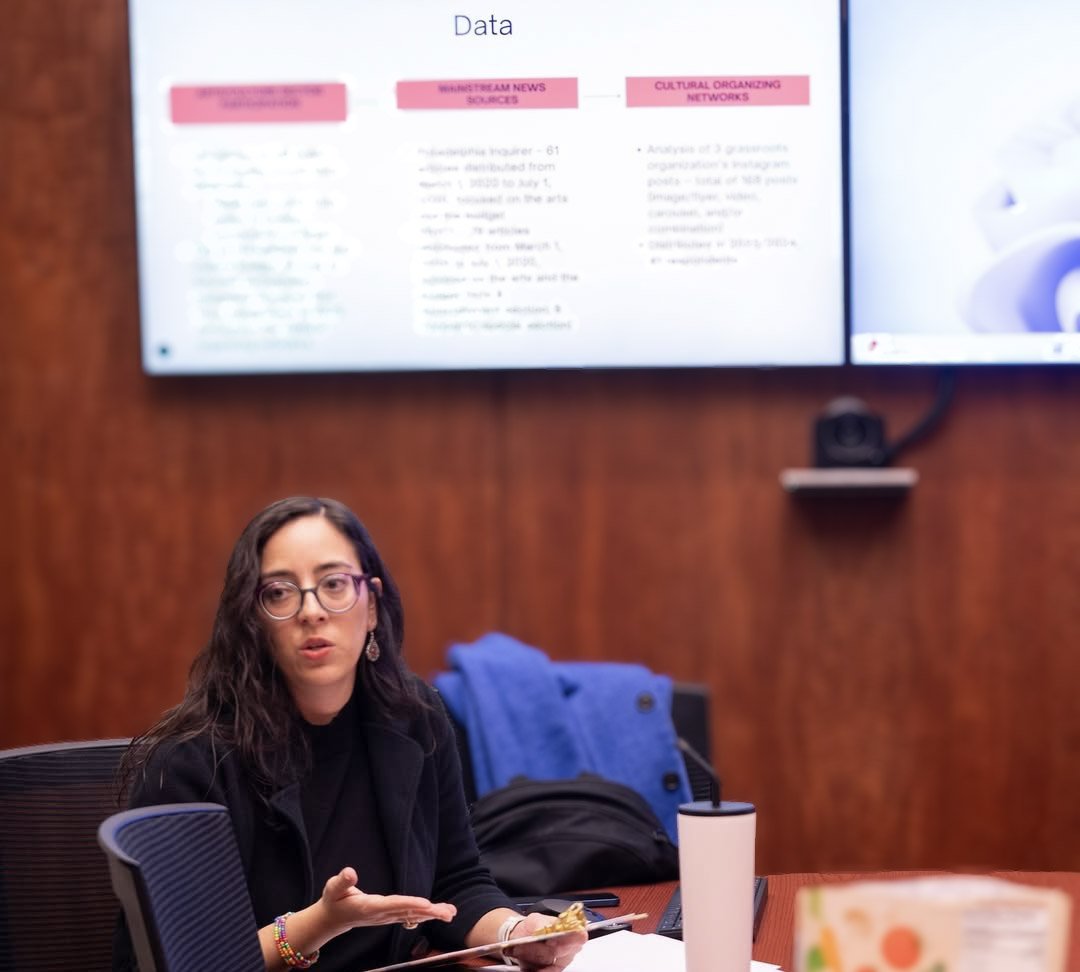
The Cultural Organizing Networks in Philadelphia.
Artists and cultural workers from historically marginalized communities in the Philadelphia region play an imperative role in the shaping of social movements. Yet, in the local mainstream media landscape, this cultural history is often invisibilized. This study seeks to understand how despite this thorough history, catalyzing art for social change work could no longer be ignored as conversations about the pandemic and racial injustices became more salient within public discourse during the microconjunctural moment of 2020. More specifically, this study investigates to what extent the practices and productions within the cultural organizing networks in Philadelphia have any influence in the shaping of local discourse on politics and policy. Furthermore, the study explores how given both the conditions of the pandemic and a realignment of public concern with social justice, online discourse around cultural arts and social justice may have shifted beginning in 2020.
Research Methods.
-
Multimodal/visual ethnography
This study uses multimodal digital and visual ethnography to examine the ways Philadelphia cultural organizing networks shift narratives within city politics, specifically related to the investment in the arts and other socio-cultural policies.
-
Critical discourse and digital ethnography
Additionally, I use critical discourse analysis to conduct a framing analysis of mainstream news sources the Philadelphia Inquirer and WHYY, along with city policy communication sources, juxtaposed with the storytelling of artists and cultural workers in-person at social justice performance rallies and online on Instagram.
-
Surveys
Furthermore, I utilized digital surveys that I distributed through Instagram and email, which I use as a tool within the digital ethnography toolbox.
Summary.
Using an overarching multimodal approach through bridging the interdisciplinary fields of Communication and Social Welfare, this study triangulates video and digital ethnography, critical discourse and framing analysis, and ethnographic survey methods. This study finds that the cultural organizing networks shifted discourse around cultural equity and racial and immigrant justice, as well as shifting the media ecosystem to more comprehensively cover these topics. This study serves as a pivotal example of how to focus on the hyper-local, in relation to national and global social justice issues and interrelated inequalities. By analyzing cultural organizing networks locally, nationally, and internationally, this research demonstrates how to engage in community-based research that is reflecting the most salient contemporary social justice issues, reflected by shifts in cultural public discourse.


